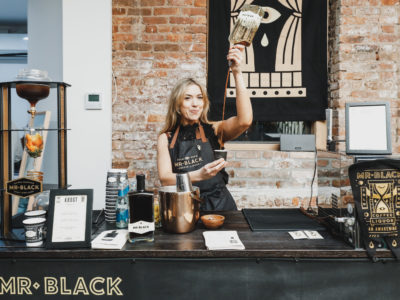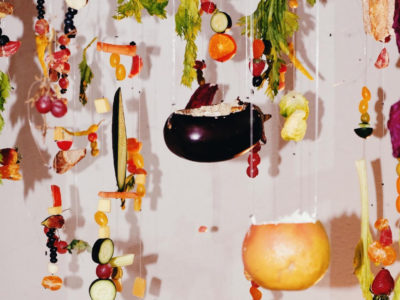
Is Nonfood the New Soylent?
Is Nonfood the New Soylent?
BY: DANIEL SPIELBERGER
You have probably heard the sensationalist stories of engineers working long hours and drinking bland, liquified meals three times a day. Ever since the launch of Soylent in 2013, it seems like our worst, dystopian fears are becoming a reality. But Sean Raspet, the Los Angeles based artist and co-founder of Nonfood, doesn’t think of his algae-based food company as something out of scary science fiction novel. Rather, he views his algae bars as both an environmentally friendly snack and a conceptual art piece.
In 2015, while working as a flavorist and product developer for Soylent, Sean became interested in their use of algae oil. Algae is both environmentally friendly and nutritious. Compared to other plants, algae tends to grow faster because it’s incredibly photosynthetic. According to Sean, algae can make “one hundreds times amount of food as soy and potentially thousands of times as food as animal products.” After he stopped working for Soylent, he had a new goal in mind — make an edible product that was “as algae-based as possible.” And so came the Nonfood project with friends Dennis Oliver Schroer and Lucy Chinen.
We know the idea of an algae-based food might seem absurd or elitist, so that’s why Sean works overtime to make his products tasty. He claims that his first batch of protein bars have an “abstract” fruity flavor with “notes of peach and blueberry.” They were purposefully picked as the first Nonfood item because they’re a “useful, everyday product” that most everyone grabs for on the go. Even better? The bars are low-fat, low-sugar, and high fiber — a healthy alternative to the caloric snacks that fill our grocery aisles.
In addition to being environmentally friendly and nutritious, Nonfood is also part of Sean’s broader vision of making art that’s accessible and functional. In his artwork, Sean plays with the “chemical formulations” behind fragrances and tastes. He has designed a scent for the M WOODS museum in Beijing and also plans on releasing his own line of fragrances in the future. “I have been trying to take artwork outside of that realm where most things just hang on walls. Instead of just doing that, I wanted to make a product that’s mass produced and is metabolized.” He said. Protein bars are part of the daily lives of millions of people, making it the ideal medium for Sean to spread his art beyond the confines of an exhibition space.
Sean is an idealist at heart. Hearing him talk about blending the “art economy” with the “mass economy” to make a green edible bar, I wondered what it would be like if more entrepreneurs approached their products with such creativity and gusto. But the question remains—will people actually eat algae?
Just a few years ago, Soylent was basically just for computer engineers, food bloggers, and doomsday types. Now it’s sold in 7-Elevens across Los Angeles with plans of expanding nationwide. There’s no reason why algae-based bars can’t achieve that level of popularity. As the negative effects of climate change become more apparent, sustainability will no longer just be a trendy buzzword but a pragmatic requirement for products. Eating energy efficient and nutritious food like algae can be one of many forward-thinking solutions. The future of snacks could very well be “abstract” with “notes of peach and blueberry.”
Do you want to try some conceptual algae? Order some today.





